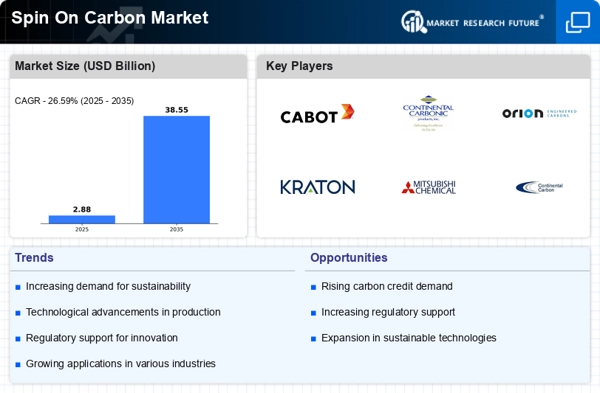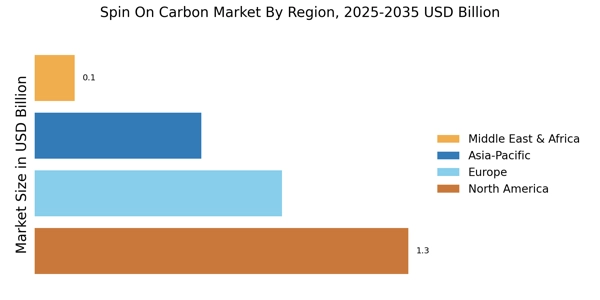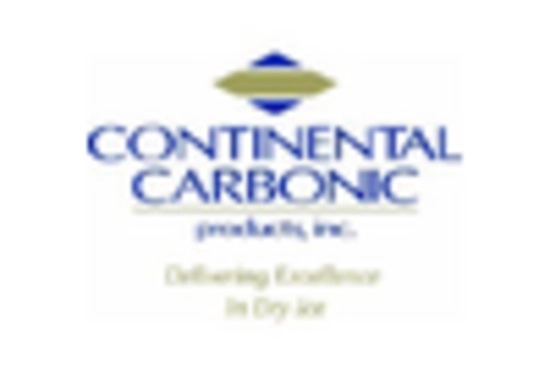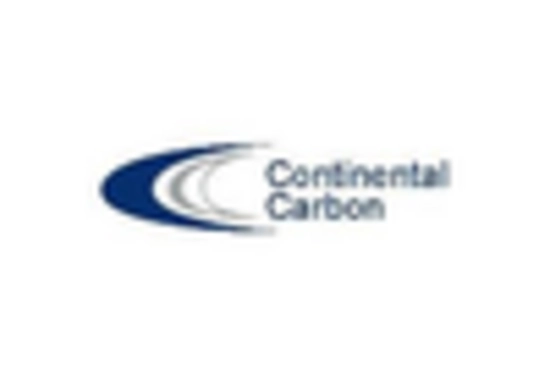The Spin On Carbon Market is currently characterized by a dynamic competitive landscape, driven by increasing demand for high-performance materials across various industries, including automotive, aerospace, and electronics. Key players such as Cabot Corporation (US), Continental Carbon (US), and Orion Engineered Carbons S.A. (LU) are strategically positioned to leverage their technological expertise and extensive product portfolios. Cabot Corporation (US) focuses on innovation in carbon black production, emphasizing sustainability and efficiency, while Continental Carbon (US) is enhancing its operational capabilities through advanced manufacturing techniques. Orion Engineered Carbons S.A. (LU) is pursuing regional expansion, particularly in Asia, to capitalize on the growing demand for specialty carbon blacks. Collectively, these strategies contribute to a competitive environment that is increasingly focused on technological advancement and market responsiveness.
In terms of business tactics, companies are localizing manufacturing to reduce lead times and optimize supply chains, which is particularly crucial in a market that is moderately fragmented. The competitive structure allows for both established players and emerging companies to coexist, fostering innovation and driving down costs. The influence of key players is significant, as they set industry standards and push for advancements in product quality and sustainability practices.
In August 2025, Cabot Corporation (US) announced a partnership with a leading automotive manufacturer to develop advanced carbon materials aimed at enhancing electric vehicle performance. This collaboration is strategically important as it positions Cabot at the forefront of the electric vehicle market, aligning with global trends towards electrification and sustainability. The partnership not only enhances Cabot's product offerings but also strengthens its market presence in a rapidly evolving sector.
In September 2025, Continental Carbon (US) unveiled a new production facility in Texas, designed to utilize cutting-edge technology for carbon black manufacturing. This facility is expected to significantly increase production capacity while reducing environmental impact. The strategic importance of this move lies in Continental Carbon's commitment to sustainability and its ability to meet the growing demand for high-quality carbon products in North America, thereby solidifying its competitive edge.
In July 2025, Orion Engineered Carbons S.A. (LU) expanded its operations in Asia by acquiring a local carbon black manufacturer. This acquisition is pivotal as it not only enhances Orion's production capabilities but also provides access to a burgeoning market. The strategic importance of this move is underscored by the increasing demand for specialty carbon blacks in the region, allowing Orion to better serve its customers and strengthen its market position.
As of October 2025, current competitive trends in the Spin On Carbon Market are heavily influenced by digitalization, sustainability initiatives, and the integration of artificial intelligence in manufacturing processes. Strategic alliances are becoming increasingly vital, as companies seek to enhance their technological capabilities and market reach. Looking ahead, competitive differentiation is likely to evolve from traditional price-based competition to a focus on innovation, technological advancements, and supply chain reliability, reflecting the industry's shift towards more sustainable and efficient practices.

















Leave a Comment